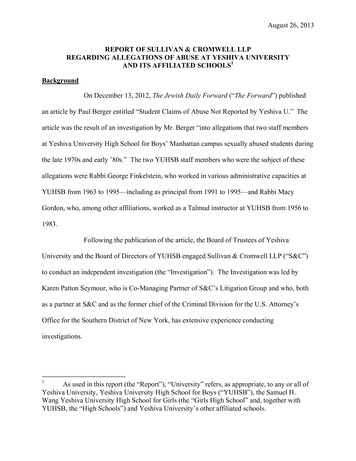
Transcription
August 26, 2013REPORT OF SULLIVAN & CROMWELL LLPREGARDING ALLEGATIONS OF ABUSE AT YESHIVA UNIVERSITYAND ITS AFFILIATED SCHOOLS1BackgroundOn December 13, 2012, The Jewish Daily Forward (“The Forward”) publishedan article by Paul Berger entitled “Student Claims of Abuse Not Reported by Yeshiva U.” Thearticle was the result of an investigation by Mr. Berger “into allegations that two staff membersat Yeshiva University High School for Boys’ Manhattan campus sexually abused students duringthe late 1970s and early ’80s.” The two YUHSB staff members who were the subject of theseallegations were Rabbi George Finkelstein, who worked in various administrative capacities atYUHSB from 1963 to 1995—including as principal from 1991 to 1995—and Rabbi MacyGordon, who, among other affiliations, worked as a Talmud instructor at YUHSB from 1956 to1983.Following the publication of the article, the Board of Trustees of YeshivaUniversity and the Board of Directors of YUHSB engaged Sullivan & Cromwell LLP (“S&C”)to conduct an independent investigation (the “Investigation”). The Investigation was led byKaren Patton Seymour, who is Co-Managing Partner of S&C’s Litigation Group and who, bothas a partner at S&C and as the former chief of the Criminal Division for the U.S. Attorney’sOffice for the Southern District of New York, has extensive experience conductinginvestigations.1As used in this report (the “Report”), “University” refers, as appropriate, to any or all ofYeshiva University, Yeshiva University High School for Boys (“YUHSB”), the Samuel H.Wang Yeshiva University High School for Girls (the “Girls High School” and, together withYUHSB, the “High Schools”) and Yeshiva University’s other affiliated schools.
August 26, 2013While the primary focus of S&C’s Investigation was the allegations of sexualabuse at YUHSB, S&C’s mandate was broad and was not limited to the allegations described inThe Forward article. S&C was directed to:(1)perform a full and complete independent investigation into these reportsand any other reports of sexual or physical abuse of University students byUniversity faculty or employees, and the University’s response to anysuch reports; and(2)review current policies and procedures, and make recommendations as tohow those policies may be improved to prevent and respond to reports ofabuse in the future.To assist with this Investigation, S&C engaged nationally-recognized sex abuse expert, Lisa M.Friel, and her firm, T&M Protection Resources (“T&M”), to provide specialized knowledge andexpertise with regard to abuse allegations. T&M conducted an independent review of theUniversity’s current policies and procedures and, where appropriate, T&M has made, and willcontinue to make, recommendations with respect to the implementation of new policies andprocedures to ensure that the High Schools and the rest of the University maintain the safestpossible environment for students. S&C and T&M comprised the Investigative Team.In addition, the Board of Trustees established a Special Committee to interfacewith S&C over the course of the Investigation. S&C provided periodic reports to the SpecialCommittee regarding the progress of the Investigation.The Special Committee has requested that S&C make this Report available to thepublic simultaneously with its delivery to the Special Committee and the Board of Trustees. Inpreparing this Report, the Investigative Team sought the halachic advice of Rabbi Gedalia DovSchwartz, the Av Beit Din of the Beit Din of America and of the Chicago Rabbinical CouncilBeit Din. Rabbi Schwartz reviewed a substantially complete draft of this Report as well as theattached policy recommendations.-2-
August 26, 2013Overview of Yeshiva UniversityYeshiva University is a private university located in New York City that isaffiliated with the Modern Orthodox branch of Judaism. Yeshiva University has its roots as areligious seminary. In 1896, Rabbi Isaac Elchanan Theological Seminary (“RIETS”) wasestablished as the first yeshiva for advanced Talmudic study in America and, in 1928, YeshivaCollege was founded.2Today, the University has over 6,400 undergraduate and graduate students at fourdifferent campuses in New York City. The University has three undergraduate schools—Yeshiva College, Stern College for Women and Sy Syms School of Business. The University’sgraduate and affiliate schools include Albert Einstein College of Medicine, Benjamin N. CardozoSchool of Law, Wurzweiler School of Social Work, Ferkauf Graduate School of Psychology,Azrieli Graduate School of Jewish Education and Administration, Bernard Revel GraduateSchool of Jewish Studies and RIETS.3The University also has affiliated Boys and Girls high schools. YUHSB islocated on the University’s Wilf Campus in Washington Heights and currently has an enrollmentof approximately 300 students.4 YUHSB maintains a dormitory facility for its high schoolstudents, which is also located on the University’s Wilf Campus.2YESHIVA COLLEGE: MISSION AND HISTORY, http://www.yu.edu/yeshiva-college/missionhistory/ (last visited Aug. 26, 2013).3YESHIVA UNIVERSITY: ACADEMICS & RESEARCH, http://www.yu.edu/academics/ (lastvisited Aug. 26, 2013).4THE MARSHA STERN TALMUDICAL ACADEMY, YESHIVA UNIVERSITY HIGH SCHOOL FORBOYS: THE COMMUNITY, http://www.yuhsb.org/about-yuhsb/the-community/ (last visited Aug.26, 2013).-3-
August 26, 2013The Girls High School (originally known as “Central”), was founded in 1948.5 In1988, the Girls High School relocated from Manhattan to Queens, where it is now located.Currently, the Girls High School has an enrollment of approximately 250 students.Scope and Methodology of the Independent InvestigationThe Investigative Team received full cooperation from the Universityadministration during the course of the Investigation and operated with complete independence.The Investigative Team was given unrestricted authority to pursue any and all leads that couldpotentially shed light on any matters related to the Investigation. The Investigative Team wasauthorized to interview all present and former University faculty, staff, students, employees,lawyers, and other individuals who might have information relevant to the Investigation. Inaddition, the Investigative Team was given unfettered access to all University documents,correspondence and other records, including raw electronic data, that could be relevant to theInvestigation.The Investigative Team gathered information during the course of itsinvestigation under the applicable attorney-client privilege and/or attorney work productdoctrine.S&C and T&M together devoted over 6,300 hours to the Investigation. Inaddition, the Investigative Team retained DOAR Litigation Consulting to restore and processelectronic data.5SAMUEL H. WANG YESHIVA UNIVERSITY HIGH SCHOOL FOR GIRLS: OUR MISSION,http://www.yuhsg.org/about.cfm (last visited Aug. 26, 2013).-4-
August 26, 2013A.Interviews ConductedIn total, the Investigative Team interviewed over 145 individuals (some on morethan one occasion) either in person, by telephone or via Skype, many of whom requested thattheir personal information be kept confidential due to the very personal and sensitive nature ofthe subject matter. The Investigative Team identified potential witnesses from a variety ofsources, including social media, documents obtained by the Investigative Team and leads fromother interviews. The Investigative Team attempted to reach every individual who was identifiedpublicly or privately as a victim of sexual or physical abuse at the University, or who wasotherwise identified as an individual who may have knowledge of such abuse (or reports thereofto the University).6 The Investigative Team requested an interview with every former Universityemployee who was identified as a perpetrator of sexual or physical abuse at the University, manyof whom agreed to be interviewed. The Investigative Team also interviewed dozens of currentfaculty and administrators at the University, including the High Schools, in connection with itsreview of the University’s current policies and procedures.At the outset of the Investigation, the Investigative Team set up an email addressand phone number that individuals with knowledge of abuse at the University could use todirectly contact the Investigative Team on a confidential basis. That email address and phonenumber were publicly issued by the University on December 24, 2012.7 In addition, in January2013, Ms. Friel posted her direct contact information on the websites of The Forward and The6The Investigative Team is appreciative of the many individuals who providedinformation to us, and we are particularly grateful to those victims who trusted us and cameforward to discuss these difficult matters. We acknowledge the emotional difficulty ofdiscussing these matters with us and the courage that it took for them to relive these events.7See STATEMENTS FROM YESHIVA UNIVERSITY, -yu/ (last visited Aug. 26, 2013).-5-
August 26, 2013Jewish Week, given their coverage regarding abuse at YUHSB.8 The Investigative Teamrequested an interview with every individual who contacted the Investigative Team through theabove-referenced email and/or phone number who reported that he or she had any direct orindirect knowledge of any abuse at the University.9In addition, the Investigative Team inquired of the current Yeshiva UniversityBoard of Trustees, the Board of RIETS, and the Board for the High Schools, as to whetheranyone had information relevant to the Investigation. A similar inquiry was made to the currentfaculty and staff at YUHSB.Over 70 individuals either declined to be interviewed or simply did not respond tomultiple messages, phone calls, emails or registered letters from the Investigative Team. Despitethe requests of the Investigative Team, the attorneys for the plaintiffs in the proceeding filedagainst Yeshiva University and YUHSB, among others, in the United States District Court,Southern District of New York, on July 8, 2013 and currently seeking up to 680 million indamages (the “Pending Litigation”), did not make their clients available for interview by the8Lisa Friel, Comment to Paul Berger, Student Claims of Abuse Not Reported by YeshivaU., THE FORWARD, Dec. 13, 2012 (comment dated: week of Jan. 14, 2013), http://forward.com/articles/167588/ ?p 8#IDComment545752701 (last visited Aug. 26, 2013); Lisa M. Friel, Comment to JTA and Staff, YU PresidentCalls Abuse Allegations “Reprehensible”, THE JEWISH WEEK, Dec. 14, 2012 (comment dated:Jan. 16, 2013, 2:49 PM), -presidentcalls-abuse-allegations-reprehensible (last visited Aug. 26, 2013).9On January 8, 2013, the Investigative Team also requested that The Forward include theInvestigative Team’s contact information in its upcoming article regarding the abuse at theUniversity. The Investigative Team also requested that The Forward and The Jewish Weekprovide its contact information to each of the individuals who reported to it that he or she was avictim of abuse at the University, and that we would assure the victims’ anonymity.-6-
August 26, 2013Investigative Team.10 In addition, a few individuals declined to be interviewed, citing their ageand mental health, and a number of individuals who were believed to have relevant informationto the Investigation are now deceased.B.Material ReviewedAs part of its review, the Investigative Team collected and reviewed tens ofthousands of pages of hard copy documents, including, but not limited to, documents from theUniversity’s archives, newspaper articles, security files, personnel and payroll files, legal files,yearbooks, board meeting minutes, applicable University policies and procedures, as well asdocuments given to the Investigative Team by interviewees and documents identified by on-linesources in the course of our Investigation.In addition, the Investigative Team collected a large volume of raw electronicdata. DOAR Litigation Consulting assisted the Investigative Team by using forensic methodsand tools to acquire and preserve certain electronic data. In total, the Investigative Teamgathered approximately 96,000 electronic documents and over 2.6 million individual emailcommunications (with about 287,000 email attachments). Of the 2.6 million emails that wereanalyzed as part of the Investigation, approximately 1.4 million were restored from theUniversity’s backup tapes by an outside vendor. In total, attorneys on the Investigative Teamreviewed over 70,000 individual emails that hit on a broadly-defined set of targeted search terms.The University did not have an institutional email system before 1996, and the vast majority ofthe emails collected by the Investigative Team are dated 2003 or thereafter.10On July 11, 2013, another attorney publicly stated that he would file an action on behalfof six additional plaintiffs to the extent he was unable to reach a settlement with the University inthe near term. (Paul Berger, Yeshiva Rocked as 6 More People Accuse School of Sex AbuseCover-Up, THE FORWARD, July 11, 2013.) That counsel similarly did not make his clientsavailable for interview by the Investigative Team.-7-
August 26, 2013The Investigative Team also conducted a review of on-line social media on atleast a weekly basis throughout the course of the Investigation to identify any relevant postings,or other information pertinent to the Investigation. The Investigative Team identified andreviewed books, blogs, articles, and comments to blogs and articles, as a result of this on-lineresearch.FindingsWhile it was the intention of the Board of Trustees to have made public a reportwhich would have set forth the specific details of the extensive interviews conducted anddocuments reviewed by the Investigative Team, as a result of the Pending Litigation, theInvestigative Team has been directed by the Special Committee to describe its findings withrespect to sexual and physical abuse in summary fashion.The Investigative Team has concluded that multiple incidents of varying types ofsexual and physical abuse took place at YUHSB during the relevant time period. This conductwas carried out by a number of individuals in positions of authority at the High Schools atvarious times throughout the period covered by the Investigation, including, in certain instances,after members of the administration had been made aware of such conduct. In addition, theInvestigative Team found that, during the relevant time period, sexual and physical abuse tookplace at other schools comprising the University as well.As part of the Investigation, the Investigative Team reviewed each individualreport of sexual and physical abuse, and the response of the University to any such report. TheInvestigative Team found that, up until 2001, there were multiple instances in which theUniversity either failed to appropriately act to protect the safety of its students or did not respondto the allegations at all. Based on what the Investigative Team learned from its interviews with-8-
August 26, 2013victims, this lack of an appropriate response by the University caused victims to believe that theircomplaints fell on deaf ears or were simply not believed by the University’s administration.The University’s response to allegations of physical and sexual abuse thatoccurred at the University since 2001, however, significantly improved. Indeed, with respect toall such allegations, the Investigative Team found that the University acted decisively to addressthe allegations and to ensure the safety of the University’s students.T&M Policy Review and RecommendationsAs described above, T&M conducted a thorough and comprehensive audit andassessment of the existing policies, procedures, education, and training currently in place at theHigh Schools with respect to the prevention of various forms of harassment, including bullying,hazing, sexual harassment and sexual abuse/assault, and the handling of allegations related tothese behaviors. T&M also developed anti-harassment policies and procedures that are tailoredto the circumstances and needs of the High Schools and made additional recommendations toensure that the foregoing conform to “best practices.”Specifically, T&M assessed and made recommendations in the following areas:xThe policies in place that prohibit sexual abuse, sexual harassment,bullying, and hazing.xThe policies and procedures in place for reporting an allegation of sexualabuse, sexual harassment, bullying, and hazing, including an evaluation ofthe internal and external channels available for reporting an incident.xThe policies and procedures in place for responding to an allegation ofsexual abuse, sexual harassment, bullying, and hazing, with particularattention to whether they provide for a response that is sufficiently prompt,thorough, and robust and is handled by people with requisite expertise andsensitivity.xThe High Schools’ internal and external reporting obligations, theirhandling of investigations related to harassment incidents, and follow-upprocedures for internal investigations.-9-
August 26, 2013xThe policies and procedures in place at the YUHSB dormitory to ensurethe safety of the students who reside there.xThe policies and procedures in place regarding the use of technology as ameans of education and communication (email, text messaging, socialnetworking, etc.) between and among students of the High Schools andbetween the High School students and the High School faculty, coaches,and other staff, both full-time and part-time (hereinafter “YUHSemployees”).xCurrent boundaries between students of the High Schools and YUHSemployees, as well as between students of the High Schools and any of theUniversity’s affiliated schools’ employees, including faculty, coaches, andother staff, full- and part-time (collectively, “YU employees”).xCurrent screening procedures for YUHS employees, both new hires andpresent employees, and recommendations of other categories of peoplewho should be screened to best ensure student safety.xTraining of YUHS employees relating to harassment, including specificallytheir training regarding relevant High School and University policies.xEducation of High School students relating to harassment, includingspecifically their education regarding relevant High School and Universitypolicies.In order to make its recommendations, T&M:xInterviewed over two dozen former YUHSB students and reviewedstatements made by many others in media accounts.xInterviewed over three dozen current faculty and staff members at theHigh Schools, male and female, young and old, religious studies andgeneral studies faculty members, including Heads of School/Principals,Assistant Principals, the YUHSB Dean of Students, Guidance Departmentstaff (both counseling and college), and various members of the AthleticDepartment Coaching Staff, as well as other staff members.xInterviewed supervisory staff of the YUHSB dormitory, both past andpresent.xInterviewed past High School administrators, faculty and staff.xInterviewed past and present University employees, includingadministrators, faculty, athletic, security, legal, human resources, andcompliance personnel.-10-
August 26, 2013xReviewed the Yeshiva University Harassment Policy and ComplaintProcedures for Students and the Yeshiva University Harassment Policyand Complaint Procedures for Faculty & Staff and assessed theeffectiveness of the present policies in (i) clearly communicating what isprohibited conduct, (ii) setting out clear and appropriate initial and followup internal reporting lines at the High Schools and University, and (iii)specifying subsequent required reporting internally at the High Schoolsand University and externally to outside entities. Overall, these policieswere assessed to see whether they were sufficient to meet the needs of theHigh Schools at the present time.xReviewed copies of relevant educational and training materials currentlyin use.xReviewed materials from previously-held workshops and trainingsprovided by the High Schools and the University.xPerformed a review of existing handbooks, draft documents, and otherguidelines regarding appropriate behavior, including the YeshivaUniversity High School For Boys Faculty Handbook, the YeshivaUniversity High School Dormitory Handbook, the Yeshiva UniversityHigh School For Boys Student Handbook, the Yeshiva University HighSchool For Girls Faculty Handbook, the Yeshiva University High SchoolFor Girls Student Handbook, the Staff Policy on Protecting Athletes forboth Schools, the Student Policy on Protecting Athletes for both Schools,the Draft Yeshiva University High School General Guidelines for Use ofSocial Media Faculty Policy, and the Draft Yeshiva University HighSchool General Guidelines for Use of Social Media Student Policy.xAnalyzed all of the information gathered from the above-detailed sourcesto gain perspective and insight into the various areas T&M was tasked toevaluate.The interviews of past and present High School and University employees andstudents—interviews that covered a 50-year period and which included many former students atYUHSB—proved invaluable to T&M’s work and have guided and shaped its recommendationsand policies.Based upon an evaluation of all the information collected, T&M:xDetermined that the University is committed to creating an environment atits High Schools and other affiliated schools in which sexual misconductand other types of harassment are not tolerated, and if they occur, will be-11-
August 26, 2013dealt with in an appropriately sensitive, effective and professional manner.To that end, the University has over time, and especially in the last decade,instituted many policies, procedures, and practices that address theseissues. T&M’s recommendations are made to augment those policies,procedures, and practices in order to further enhance the University’sability to sensitively, effectively, and professionally address harassment inall its various forms on its high school campuses.xIdentified areas in which the High Schools’ present policies could beaugmented to further enhance how the University addresses issues relatedto bullying, hazing, sexual harassment, and sexual abuse/assault.xRevised the current University Harassment Policy, tailoring it to betteraddress the needs of a high school, and renamed the augmented policy the“YUHS Anti-Harassment Policy.”xAssessed current training of High School employees related to harassment,including, but not limited to, training on relevant subject matter,knowledge of present policies and reporting protocols, and maderecommendations for enhanced training in these areas.xAssessed current education of students of the High Schools related toharassment issues, including, but not limited to, training on relevantsubject matter, knowledge of present policies and reporting protocols, andmade recommendations for enhanced education in these areas.xDrafted recommendations for implementing the YUHS Anti-HarassmentPolicy, including recommendations for employee training and studenteducation.xAssessed current boundaries between students of the High Schools andYUHS employees, and YU employees, to identify vulnerabilities, anddrafted suggested guidelines for maintaining appropriate boundaries.xDrafted suggested changes to the current High School Athletic Policies.xDrafted recommendations for implementing the revised High SchoolAthletic Policies.xBegan assessing the electronic and social media interaction betweenYUHS employees and YUHS students and drafting suggested changes tothe draft YUHS Social Media Policies. This work is ongoing and it isanticipated it will conclude in the Fall of 2013.xAssessed existing screening procedures for new hires at the High Schools,identified potential vulnerabilities in such procedures, and made-12-
August 26, 2013recommendations for enhancing the screening of YUHS employees, andidentified additional categories of people who should be screened.A.xReviewed the vetting process for new hires at the High Schools anddrafted recommendations regarding same.xMade additional recommendations regarding other issues that wereidentified during the evaluation process.T&M Draft YUHS Anti-Harassment PolicyThe University has long had a harassment policy applicable to all its affiliatedschools, including the High Schools. This policy, entitled “Harassment Policy & ComplaintProcedures,” was most recently revised in 2012 and this revised version became effective inNovember of that year. T&M reviewed this policy, found it to be clear, comprehensive, and incompliance with all legal requirements, and adapted it to better suit a high school campus. In sodoing, T&M endeavored to cover all forms of harassment that are found at a secondary school.Thus, in addition to sexual abuse and sexual harassment, the harassment policy T&M drafted forthe High Schools covers bullying and hazing as well. It clearly defines all four types ofharassment and lists common examples of such prohibited behavior. It clearly delineates who iscovered by this augmented “anti-harassment” policy, where it reaches, and what people shoulddo when confronted by harassment.The YUHS Anti-Harassment Policy also sets out reporting alternatives, bothinside and outside the high schools, to ensure that anyone who wants to report a violation of theYUHS Anti-Harassment Policy has a person he or she is comfortable with to report to. Students,their parents/guardians, and any other person not employed by the High Schools or theUniversity are advised they may report a violation to anyone at the High School with whom theyare comfortable or they may report to the YU Liaison to the High Schools, the Office of theGeneral Counsel, the YU Compliance Hotline, or a source totally outside the University, T&M-13-
August 26, 2013Protection Resources. YUHS and YU employees and volunteers, upon learning of a possibleviolation of the Policy, whether as a victim or witness, or who learns of a possible violation fromsomeone else, must promptly report the possible violation to one of the following people: 1)their supervisor; 2) a Guidance Counselor; 3) the Dean of Students; 4) the Assistant Principal; 5)the Principal for General Studies; or 6) the Head of School/Principal. If anyone other than theHead of School/Principal is notified, that person must promptly inform the Head ofSchool/Principal of the report. Once the Head of School/Principal is notified of such a report, heor she must notify the YU Liaison to the High Schools and the Office of the General Counsel atthe University.If the report of a suspected violation of the Policy involves the Head ofSchool/Principal, the Policy states that the Head of School/Principal should not be notified, butrather the report should be made to the YU Liaison to the High Schools and the Office of theGeneral Counsel at the University and the latter will apprise the President of the University ofsuch report. For reports of all other violations of the YUHS Anti-Harassment Policy, the Officeof the General Counsel will use its discretion to decide when the President of the Universityshould be apprised of the report. If for any reason a YUHS or YU employee or volunteer isuncomfortable reporting the violation to one of the above-designated individuals, the Policystates that he or she may instead report directly to the YU Liaison to the High Schools and theOffice of the General Counsel at the University.The YUHS Anti-Harassment Policy details how an investigation is to proceed,who will designate the person to conduct the investigation, how it will be documented, how thedocumentation will be retained, and all the possible penalties that face someone found to haveviolated the Policy. In addition, it sets out New York State’s Mandatory Reporting Law’s-14-
August 26, 2013obligation to report specified abuse to the State Hotline when there is reasonable cause tosuspect such abuse has occurred. New York State law only requires that abuse and neglectperpetrated by a parent, guardian, or other person legally responsible for the child be reported tothe State Hotline. It does not require that abuse perpetrated by a school employee upon a studentbe reported to the State Hotline or law enforcement. However, despite having no legalobligation to do so, the University has by its new YUHS Anti-Harassment Policy obligated itselfto report to law enforcement any suspected physical or sexual assault, as defined by the NewYork State Penal Law, of a High School student perpetrated by a YUHS or YU employee,volunteer, employee of a contracted service provider, or any other adult at the University whenthe Office of the General Counsel at the University has reasonable cause to suspect that such anassault has occurred.T&M believes that the High Schools’ newly adopted YUHS Anti-HarassmentPolicy is the “gold standard” for handling harassment on a high school campus and is designed tosupport the University’s efforts to make the High Schools the safest, most hospitable learningand working environments they can possibly be. The YUHS Anti-Harassment Policy, in itsentirety, can be found in Appendix A.B.YUHS Guidelines for Maintaining Appropriate Boundaries Between YUHSStudents and YUHS Employees, Volunteers, and Employees of ContractedService Providers (“Boundary Guidelines”)T&M also recommended augmented Boundary Guidelines that are a combinationof guidelines that were already in force at the High Schools and others that T&M felt wereappropriate to put into place. They cover such areas as meeting alone with students, appropriatephysical contact, appropriate topics of conversation, tutoring, riding in cars, going to students’homes and having students in their homes, appropriate attire to wear in front of students, and-15-
August 26, 2013other situations that could entail a crossing of appropriat
Yeshiva University is a private university located in New York City that is affiliated with the Modern Orthodox branch of Judaism. Yeshiva University has its roots as a . Ferkauf Graduate School of Psychology, Azrieli Graduate School of Jewish Education and Administration, Bernard Revel Graduate School of Jewish Studies and RIETS.3
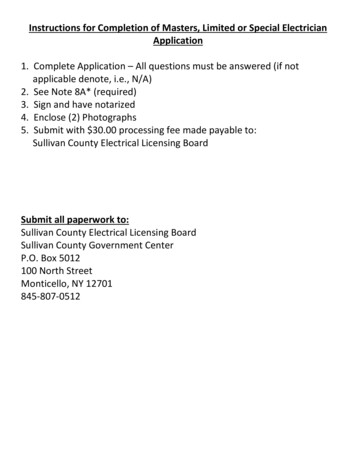
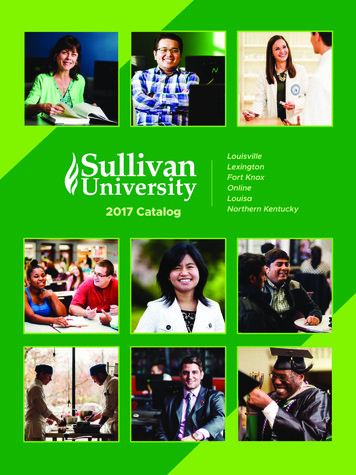
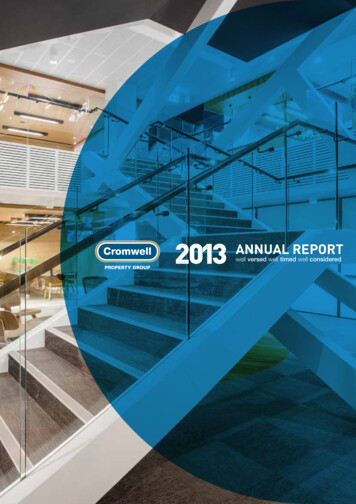
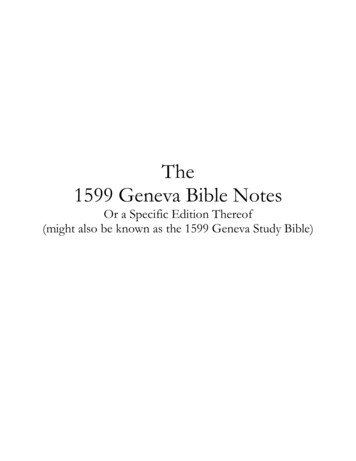
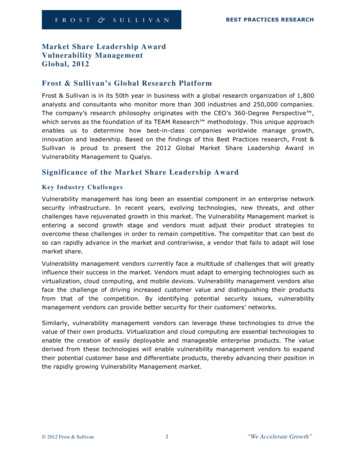

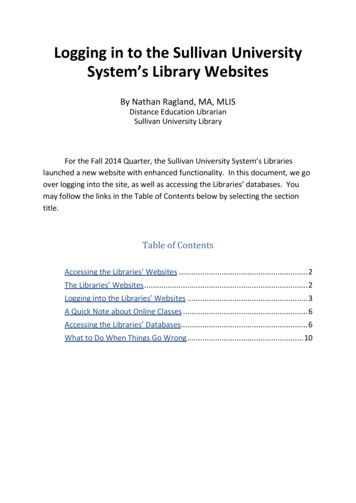
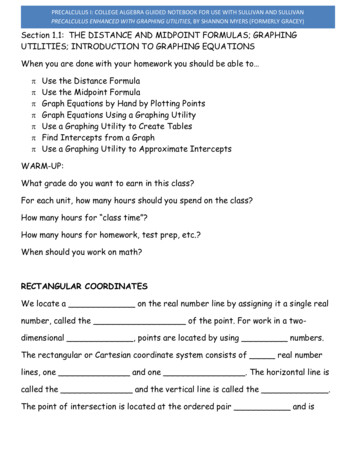

![2017 [CLIC] Attendee List - California Lodging Investment Conference](/img/59/2017-clic-attendee-list.jpg)
